
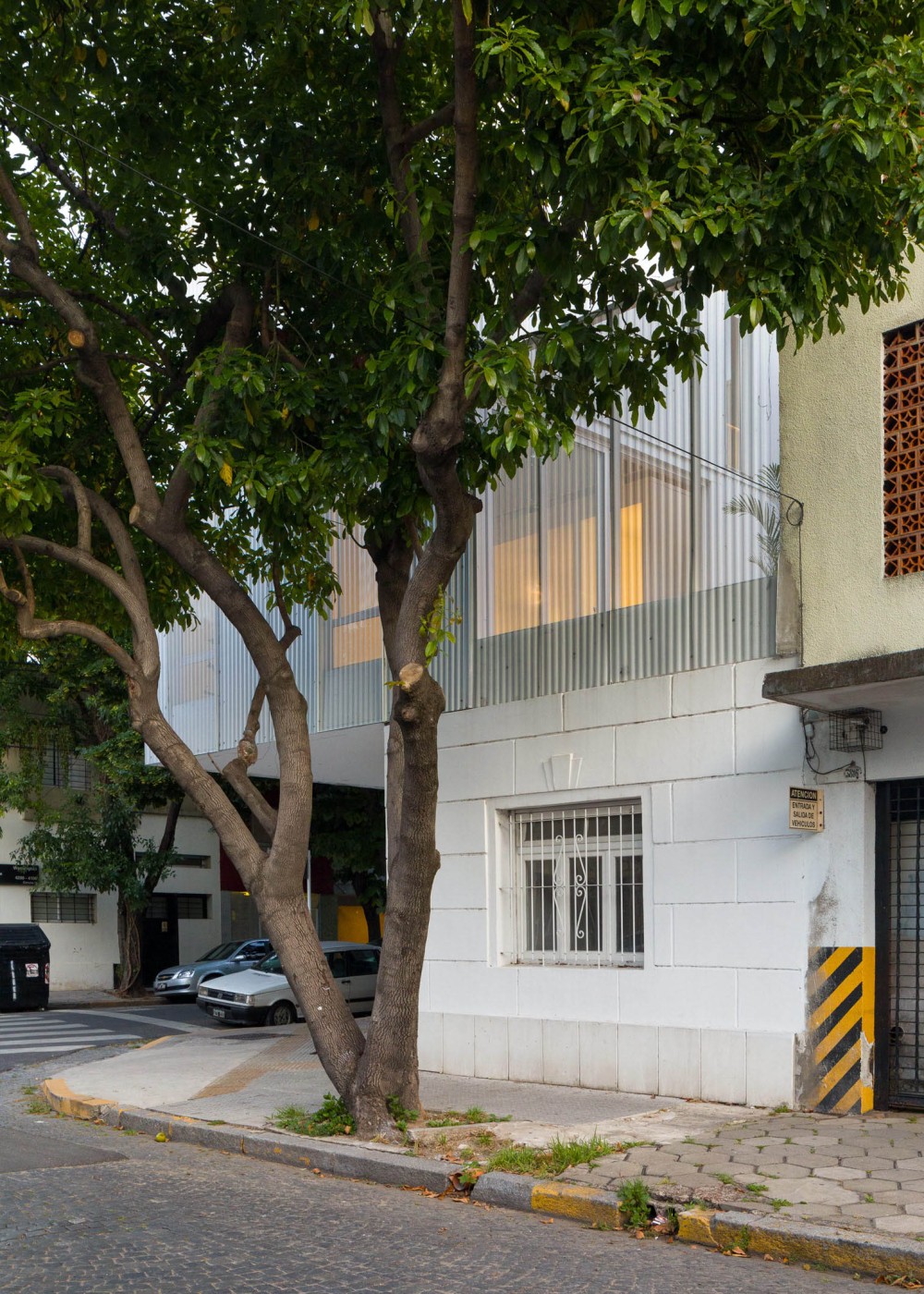





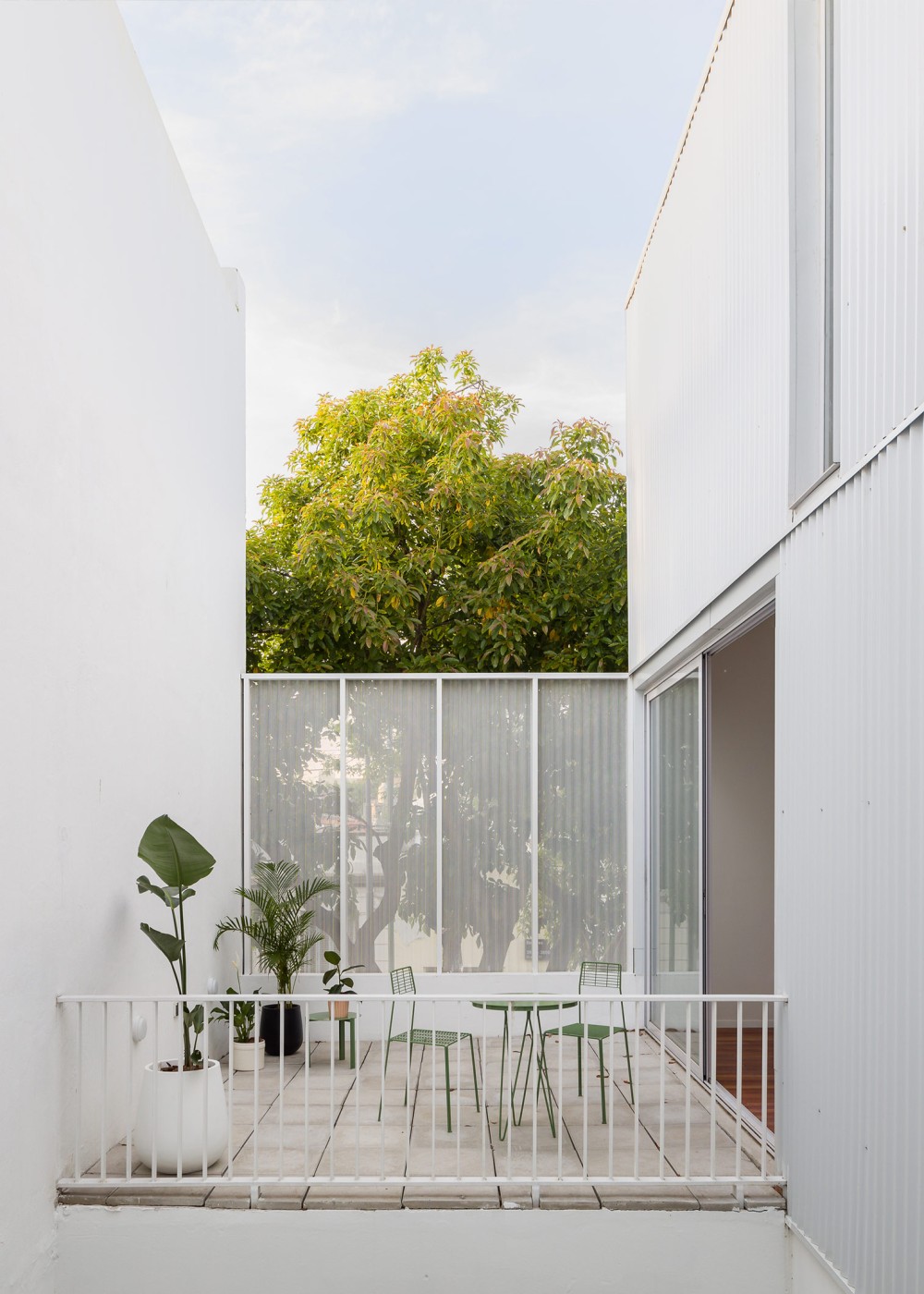



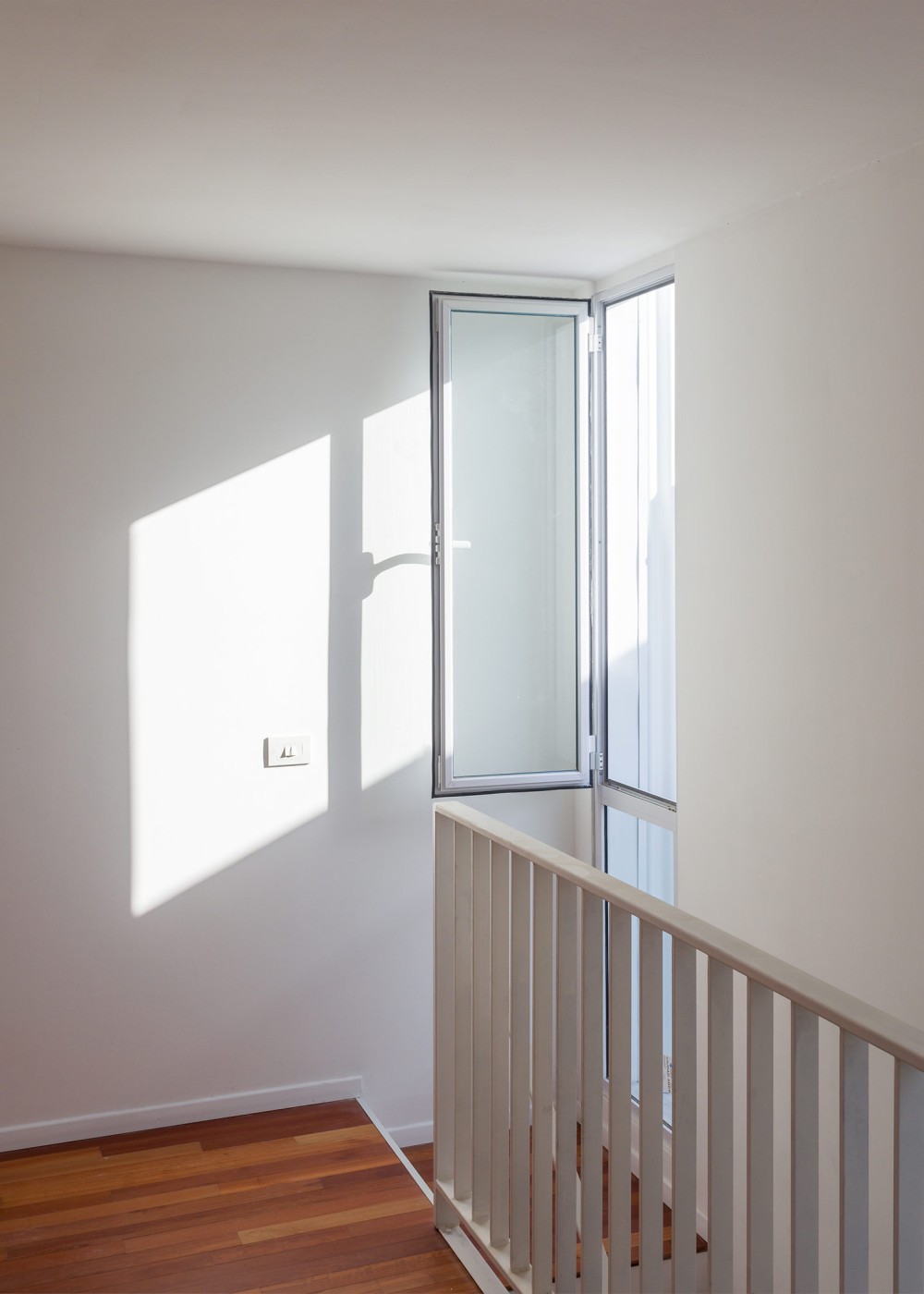

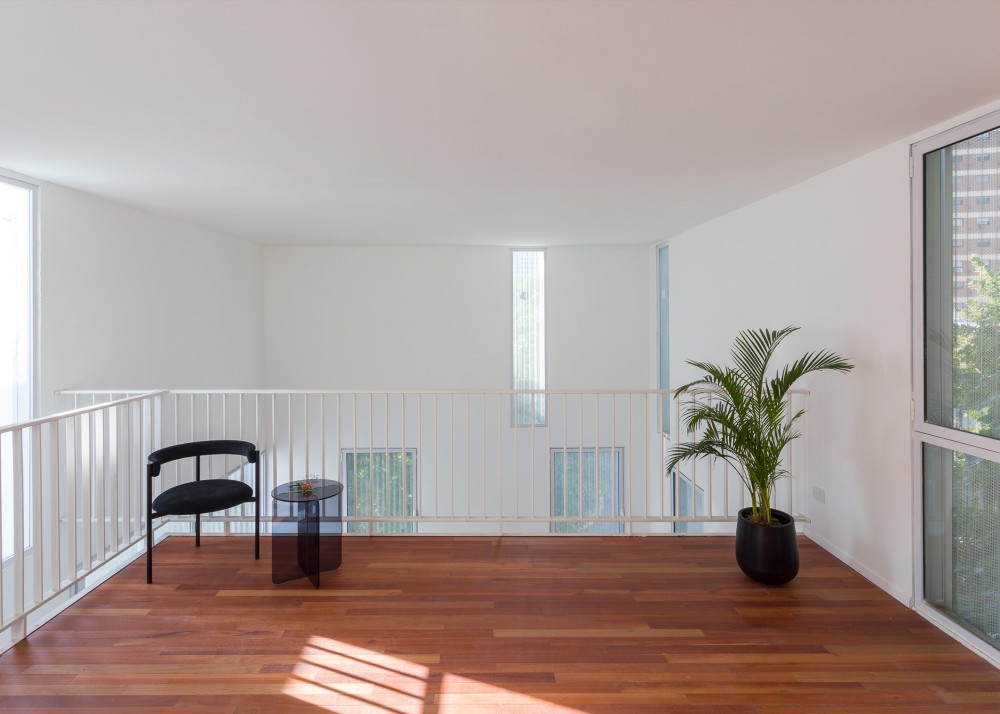



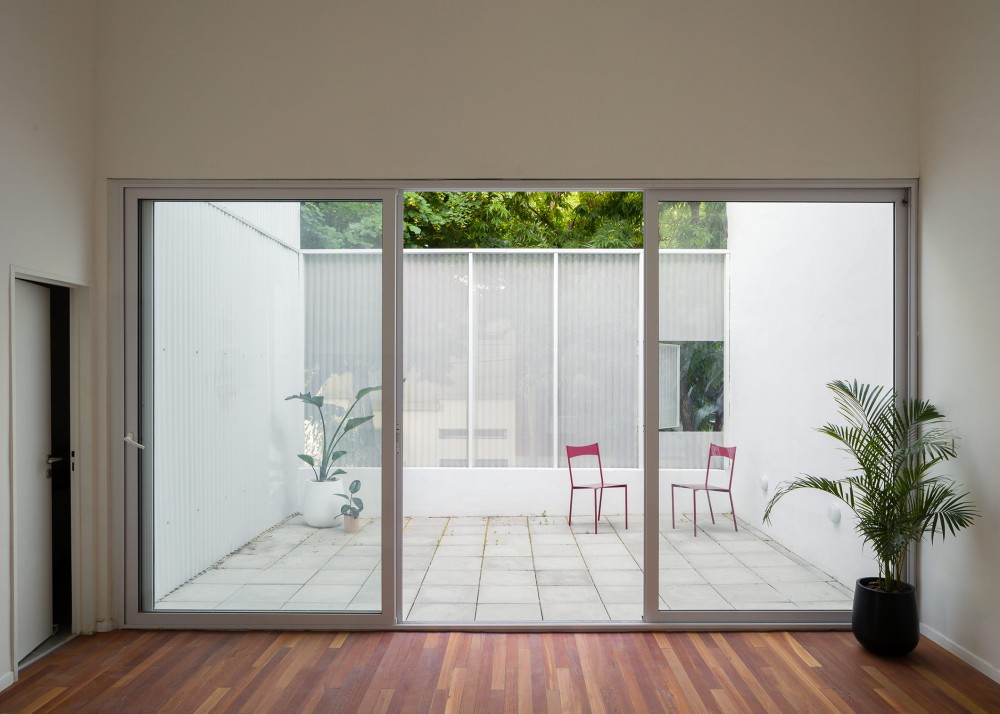

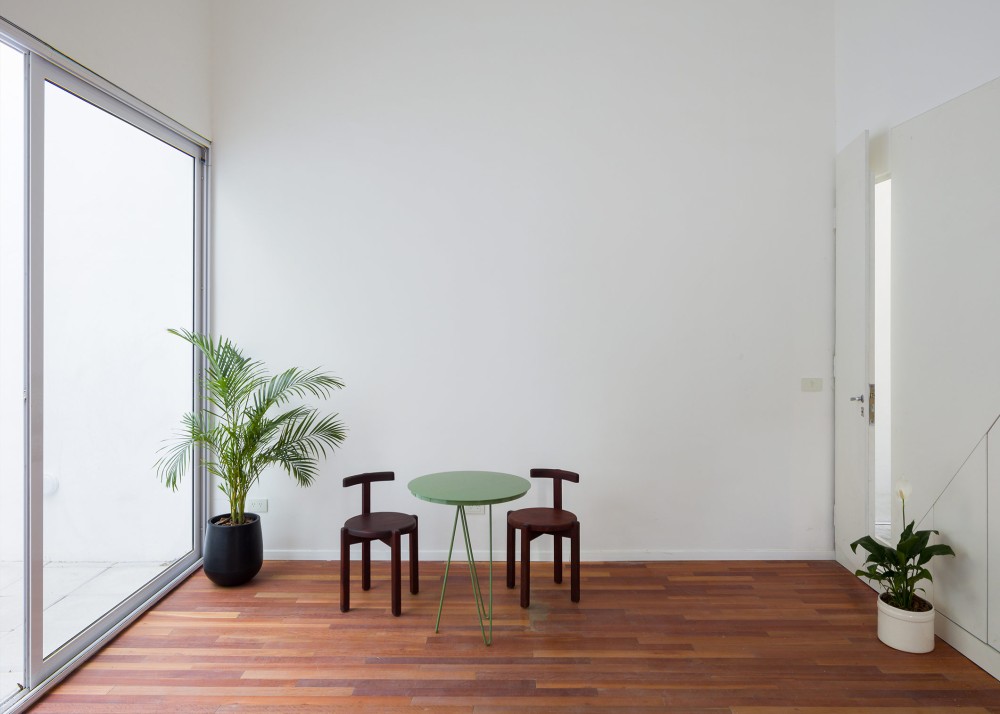



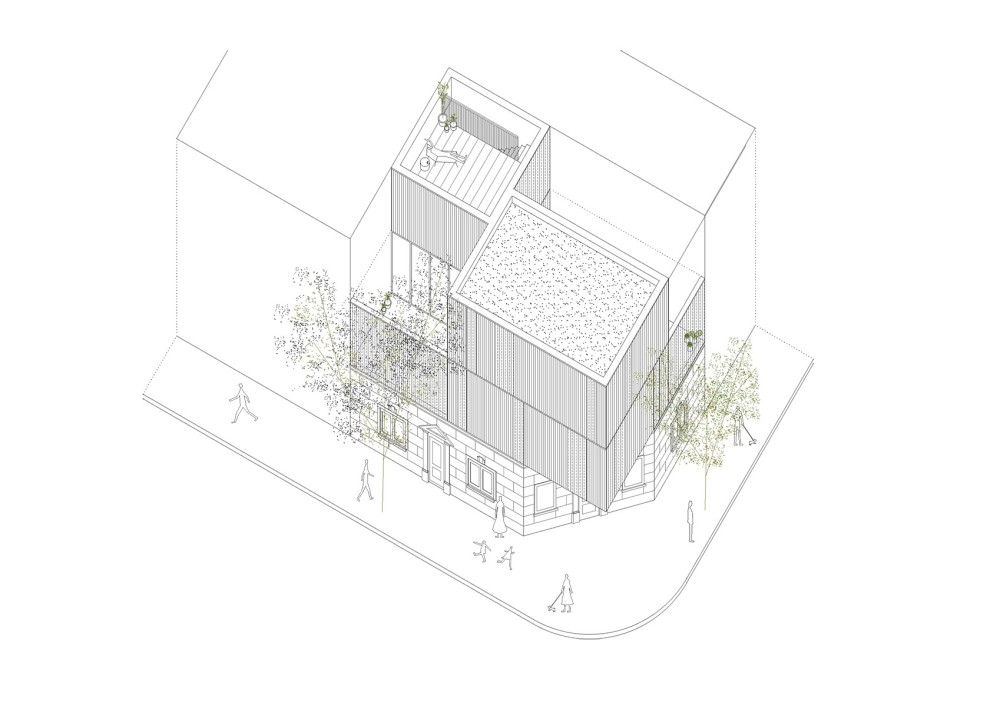


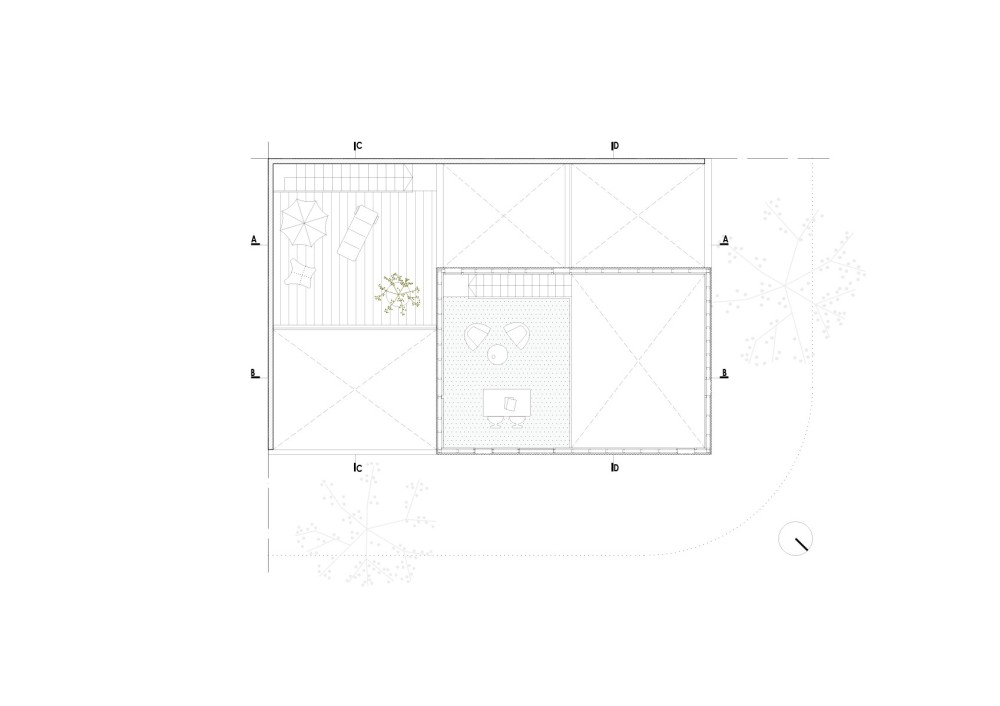
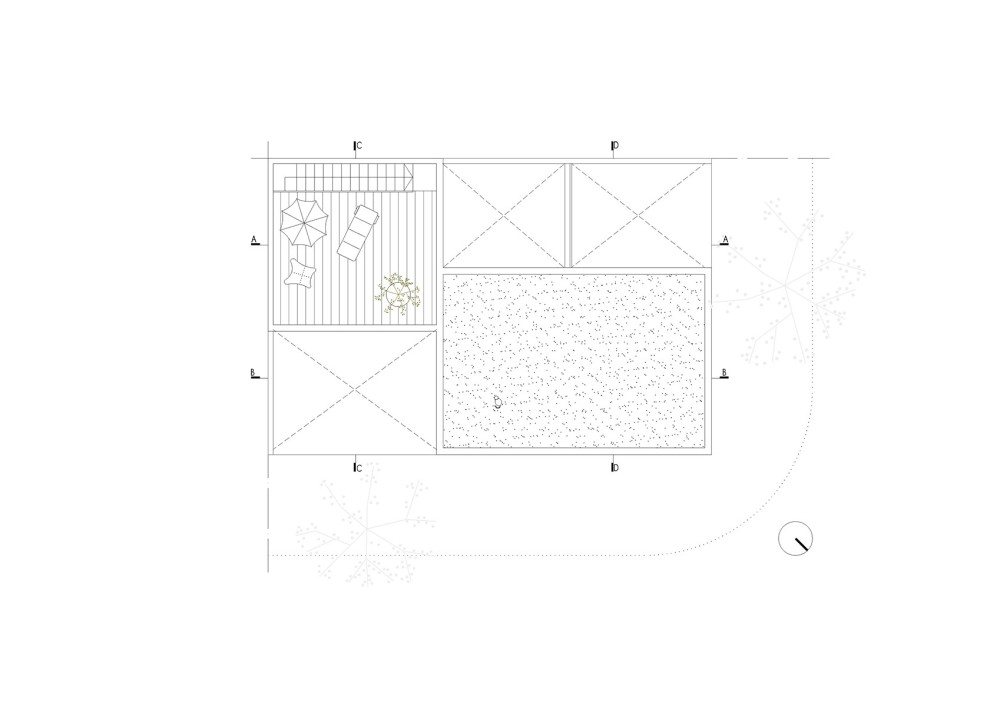






Peaches Besares
Reforma y Ampliacion , 2022
Locación:
Saavedra, Buenos Aires
Equipo de proyecto:
Enrico Cavaglià, Luciano Intile, Guillermo Mirochnic, Mercedes Pieroni, Maria Jose Cristofakis, Julia Cattani
Fotografía:
Fernando Schapochnik
Peaches Besares es una reforma y ampliación de una propiedad en el barrio porteño de Saavedra. El contexto es un vecindario de casas bajas y pocos edificios consolidados. El barrio es una mezcla de nuevos y viejos habitantes que desarrollan sus días al rededor de uno de los parques mas activos de la ciudad, ubicado a unas pocas cuadras.
La construcción originaria se componía por dos unidades habitativas de dos ambientes en planta baja. Lo existente estaba realizado con la clásica técnica de mampostería portante y techo de bovedillas dando por resultado unos espacios reducidos, fragmentados y con aberturas a la calle relativamente chicas. La estrategia proyectual apunta a aprovechar estos espacios mayormente definidos por sus propias condiciones constructivas y buscar amplitud espacial en los sectores donde las condiciones de iluminación y ventilación son mas favorable. Con esta estrategia se evita un gran esfuerzo para oficiar estas condiciones dadas. Las areas mas publicas y dinámicas de las viviendas se desarrollan en las plantas altas contenidas en unos volúmenes simples que completan la esquina. La posición de las cajas y su condición materica permite generar secuencias de espacios con características diferentes. Las terrazas se cierran hacia el exterior con chapas acanaladas microperforadas generando habientes exteriores contenidos y privados. Las áreas de los estares se relacionan de manera directa hacia la calle con ventanas de diferente tamaño que velan las miradas gracias a la misma chapa. La casas terminan siendo una secuencia de espacios conectados entre si que toman usos a según de sus condiciones naturales.
Toda la parte de ampliación se prefabricó en taller gracias a unos bastidores en steel frame. Los mismos se montaron en obra aprovechando la estructura existente, unos refuerzos puntuales metálicos y una gran viga de transición que permite tomar el voladizo. Los detalles de encuentros entre partes, con las carpierais y con la construcción existente, se desarrollaron de manera artesanal para mantener un control fino sobre las texturas y la neutralidad de la ampliación.
Peaches Besares
Renovation, 2022
Location:
Saavedra, Buenos Aires
Project team:
Enrico Cavaglià, Luciano Intile, Guillermo Mirochnic, Mercedes Pieroni, Maria Jose Cristofakis, Julia Cattani
Photo:
Fernando Schapochnik
Peaches Besares is a renovation and expansion project of a property in the Buenos Aires neighborhood of Saavedra. The context is a neighborhood of low-rise houses and few consolidated buildings. It is a mix of new and old residents who go about their daily lives around one of the most active parks in the city, located just a few blocks away.
The original construction consisted of two small ground-floor residential units, each with two rooms. The existing structure was built using the classic technique of load-bearing masonry and vaulted slab ceilings, resulting in small, fragmented spaces with relatively small windows facing the street. The design strategy aims to take advantage of these spaces, primarily defined by their own construction constraints, and to seek spatial openness in areas where lighting and ventilation conditions are more favorable. This approach avoids the need for significant interventions to improve these inherent conditions.
The more public and dynamic areas of the homes are developed on the upper floors, contained within simple volumes that complete the corner of the property. The placement of the boxes and their materiality creates sequences of spaces with different characteristics. The terraces are enclosed from the exterior with micro-perforated corrugated metal sheets, creating enclosed, private outdoor spaces. The living areas connect directly to the street through windows of various sizes, which protect privacy thanks to the same metal cladding. The houses thus become a sequence of interconnected spaces, with uses determined by their natural conditions.
The entire expansion was prefabricated in a workshop using steel frame panels. These were assembled on-site, leveraging the existing structure, specific metal reinforcements, and a large transition beam that supports the cantilevered section. The details of the junctions between parts, with the carpentry, and with the existing construction were developed in an artisanal manner to maintain fine control over the textures and the neutrality of the expansion.
